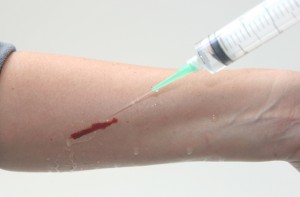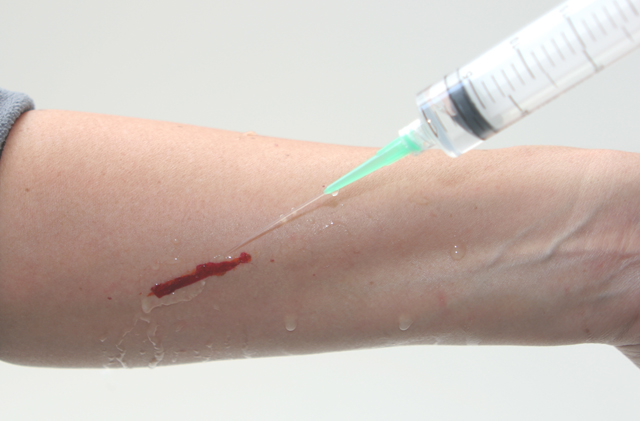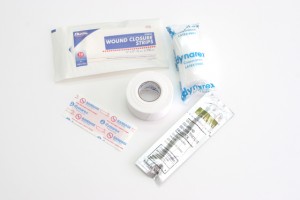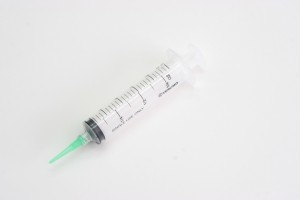
One of the most common injuries you’ll encounter outdoors is a bad scrape or a small open wound or cut(s) as a result of a short fall or slipping. While most people will immediately put pressure on the area to stop the bleeding, Buck Tilton co-founder of the Wilderness Medicine Institute and outdoor safety author, recommends cleaning the wound first, to prevent infection, then applying pressure and a dressing.
According to Tilton, cleaning a wound can speed healing and reduce scarring. Tilton recommends using clean water, disinfected water or filtered water that’s safe to drink. There are several ways to do this depending on what you have on hand. One of the best methods is using an irrigation syringe with an 18-gauge plastic tip. Hold the syringe two inches above and perpendicular to the wound and push down on the plunger to quickly and forcefully move the water over the wound.
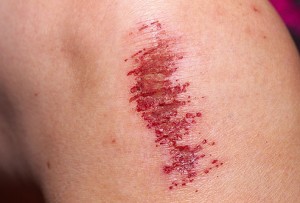
If you don’t have a syringe, you can use a bicycle water bottle or force water out of a hydration bladder. You can also use a clean plastic sandwich bag with a small hole punched into it. Squeezing the bag will also create moderately high pressure water to clean the wound. Tilton recommends using at minimum of a half-liter of water to thoroughly clean out the wound which may have embedded gravel or dirt.
Once the wound is clean and clear, apply a dressing preferably made from conforming gauze and held on with tape. Check on the area often and reapply a fresh dressing when necessary. Once you get back to your campsite or to a first aid center, make sure to clean the area again with an antiseptic.
Deep wounds will require closing the area with wound closure strips. Then it can be dressed to protect it from infection. Tilton recommends checking for signs of infection. These are:
- Increasing pain, rednesss or swelling
- Puss or green drainage from the wound
- Red streaks on the skin adjacent to or upstream of the wound
- Fever
- Use a syringe with a catheter tip from your First Aid kit or a clean plastic sandwich bag with a pin hole punched in it.
- Fill with clean drinking water
- Hold the syringe above the wound and perpendicular to the surface
- Push down hard on the plunger or squeeze the bag or water bottle hard to create a high-pressure stream of water.
- Clean out the area completely. If the wound is deep, spread apart the area with your fingers. (Always use gloves when possible and protect your eyes from any splashing with sunglasses or goggles).
- Irrigate the wound with at least a 1/2 liter of water.
- Deep Wounds: Carefully remove any remaining dried blood or particles of dirt with tweezers.
- Dress the area with a non-adherent pad, then wrap with absorbent gauze and tape
- Deep Wounds: Use tincture of benzoin along the sides of the area and attach wound closure strips across the area to close the wound.
- Dress the wound with a non-adherent pad, then wrap with absorbent gauze and tape.
For more information on outdoor first aid and to find first aid products, visit www.adventuremedicalkits.com.
